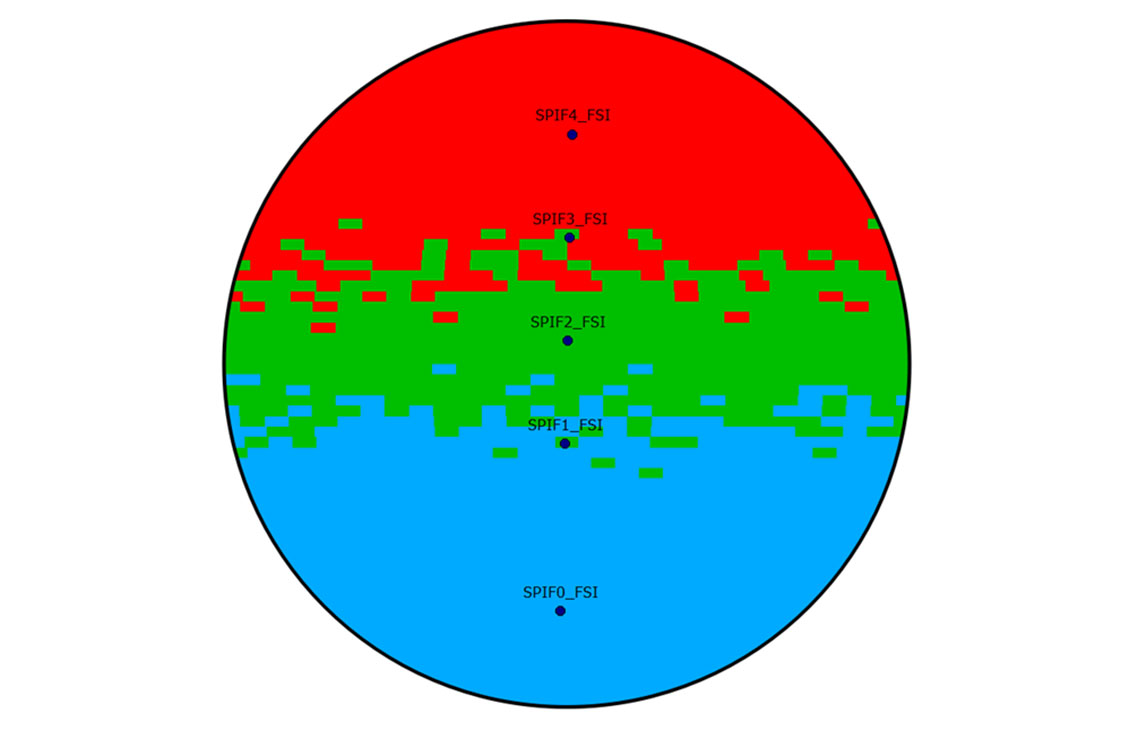Techlog Production Logging
Integrate production logging measurements for comprehensive well evaluation.

Production logging measures downhole fluid parameters on a zone-by-zone basis to yield information about the type and movement of fluids within and near the wellbore. Applications for production logging measurements are numerous, including routine surveillance of wells and reservoirs to monitor zonal contributions, analysis of new completions to optimize production, and investigation of problems such as leaks, water entry, or unwanted crossflow.
The Techlog wellbore software platform enables performing a complete production logging workflow, from raw acquisition data to interpreted zonal flow rates. The workflow is efficiently accomplished using a suite of dedicated procedures that extract the most information from the data.
Data preparation
Techlog Production Logging incorporates an automated suite of sequential workflows to streamline the preparation of raw log data from any service provider. The module handles both depth- and time-based production data and rapidly organizes it for immediate use in the visualization and processing workflows. Numerous tool configurations are built in and are customizable as needed.
Data visualization and quality control
Data QC is a fundamental part of any production logging workflow. The first stage is viewing the raw data in an interactive setting to identify which logging runs provide the most dependable data and which have anomalies. Different runs can be automatically depth-aligned and sections of bad data flagged to be ignored in subsequent processing steps. Image logs can be created from probe data to better visualize the downhole environment.
Spinner calibration
The majority of production logging interpretations require the calibrating the spinners by plotting recorded measurements against cable velocity. This user-friendly interface enables the analyst to determine the best calibration results regardless of the situation. The slopes, intercepts, and thresholds are computed automatically and can be manually changed or recomputed following simple editing. After calibration, the apparent velocity is computed for each pass.
Data stacking
The data-stacking utility enables combining multiple passes into one final dataset and averaging multiple curves within a logging pass. There is extensive control over the stacking methodology, including the optional use of statistical inputs.
Fluid properties
Reservoir PVT data can be employed to its full capability by using the extensive SLB library of fluid correlations. Properties can be computed or imported from tables and easily verified with the built-in visualization capabilities of the Techlog platform.
Multisensor array tools
Techlog Production Logging includes specific processing and plots for QC and interpretation of array tool data from any service provider. This includes the SLB algorithms for array-holdup profiles that use data from production logging systems for horizontal and deviated wells.
Zonal rate computation
The inversion of logged data to downhole flow rates is performed using the OLGA dynamic multiphase flow simulator, which is designed for all deviations, including horizontal wells. Extensive control over the matching process enables the user to achieve the best possible interpretation.
Selective inflow profile
When multiple production logging surveys are available, a selective inflow profile analysis can be performed to estimate the reservoir pressure and absolute open flow potential.
Report generation
The built-in report generator saves time and enhances standardization by formatting plots, tables, and logs into a preformatted template, which can be customized for individual requirements.
- Flow contributions.
- Leak detection.
- Production optimization.
- Reservoir surveillance.
- Water shutoff.
- Crossflow evaluation.
- Completion staging.
- Complete well evaluation that combines openhole and cased hole log data, well integrity, and production logging in one platform.
- Robust PVT and flow assurance science to support high-confidence results.
- Enhanced integration with the Petrel E&P software platform and ECLIPSE industry-reference reservoir simulator.
- Applicable to producing and injection wells.
- Comprehensive sequential workflows.
- Support for multiprobe tools.
- Latest industry-validated flow correlations.
- Horizontal well interpretation using proprietary algorithms.
- Extensive PVT libraries. Library

NExT Techlog training courses
NExT offers a comprehensive training program to support users of the SLB software, plugins, and other software products.
In this section
-

Techlog Cased Hole
Integrate production logging measurements for comprehensive well evaluationIntegrate production logging measurements for comprehensive well evaluation.
-

Techlog Production Logging
Integrate production logging measurements for comprehensive well evaluationIntegrate production logging measurements for comprehensive well evaluation.
-

Techlog Wellbore Integrity
Determine the quality of cementing operations and ensure that appropriate barriers are in place both during and after well constructionDetermine the quality of cementing operations and ensure that appropriate barriers are in place both during and after well construction.





